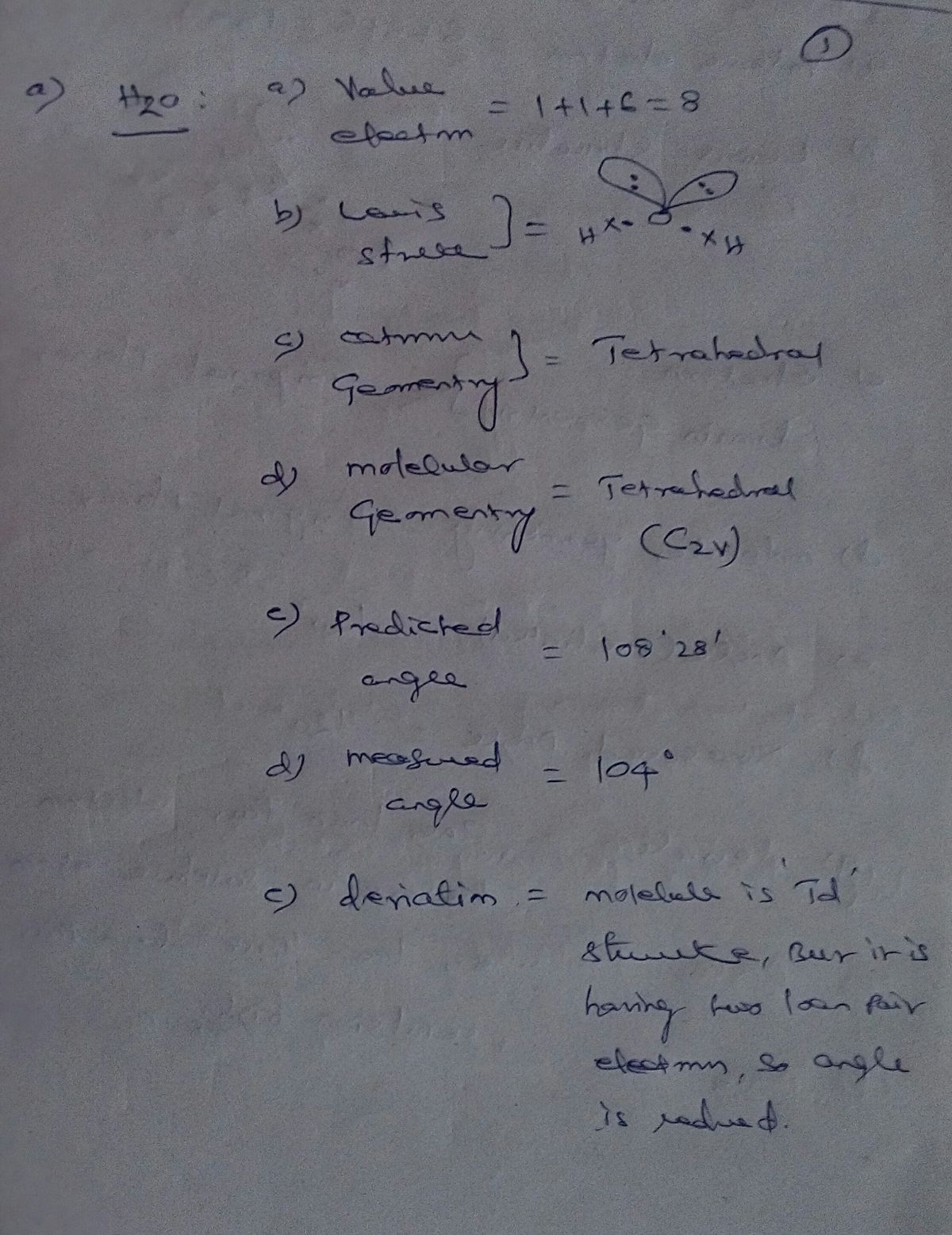Chemistry
10th Edition
ISBN:9781305957404
Author:Steven S. Zumdahl, Susan A. Zumdahl, Donald J. DeCoste
Publisher:Steven S. Zumdahl, Susan A. Zumdahl, Donald J. DeCoste
Chapter1: Chemical Foundations
Section: Chapter Questions
Problem 1RQ: Define and explain the differences between the following terms. a. law and theory b. theory and...
Related questions
Question
![The image displays a table designed for educational purposes, focusing on the analysis of molecular structure and geometry. The table is organized into eight columns and six rows, with the following headings:
1. **Molecule/Ion**: List of chemical species being analyzed.
- [PF₆]⁻
- [BeF₄]²⁻
- Br₂(CH₃)₂Se
- H₂O
- SO₂
- Cl₂CF₂I
2. **# valence electrons**: Number of valence electrons in each molecule or ion.
3. **Lewis Structure**: Space for drawing the Lewis dot structure for each molecule or ion.
4. **Electron Domain Geometry**: Describes the geometric arrangement of electron domains around the central atom.
5. **Molecular Geometry**: Describes the three-dimensional shape of the molecule or ion.
6. **Predicted Angle/s**: Lists the theoretical bond angles based on geometry.
7. **Measured Angles**: Space to record actual measured bond angles.
8. **Justification for agreement or deviation?**: Space to explain any discrepancies between predicted and measured angles.
The table is likely used in a chemistry education context to help students understand the relationships between electron configuration, molecular shape, and bond angles. It facilitates the process of predicting and explaining molecular geometry using theoretical and empirical data.](/v2/_next/image?url=https%3A%2F%2Fcontent.bartleby.com%2Fqna-images%2Fquestion%2Faa11fcfc-11f7-448e-9db2-5b5a3dd5c606%2Ffc337afb-46f9-42ee-810b-7962737b5487%2Fni9skr5_processed.png&w=3840&q=75)
Transcribed Image Text:The image displays a table designed for educational purposes, focusing on the analysis of molecular structure and geometry. The table is organized into eight columns and six rows, with the following headings:
1. **Molecule/Ion**: List of chemical species being analyzed.
- [PF₆]⁻
- [BeF₄]²⁻
- Br₂(CH₃)₂Se
- H₂O
- SO₂
- Cl₂CF₂I
2. **# valence electrons**: Number of valence electrons in each molecule or ion.
3. **Lewis Structure**: Space for drawing the Lewis dot structure for each molecule or ion.
4. **Electron Domain Geometry**: Describes the geometric arrangement of electron domains around the central atom.
5. **Molecular Geometry**: Describes the three-dimensional shape of the molecule or ion.
6. **Predicted Angle/s**: Lists the theoretical bond angles based on geometry.
7. **Measured Angles**: Space to record actual measured bond angles.
8. **Justification for agreement or deviation?**: Space to explain any discrepancies between predicted and measured angles.
The table is likely used in a chemistry education context to help students understand the relationships between electron configuration, molecular shape, and bond angles. It facilitates the process of predicting and explaining molecular geometry using theoretical and empirical data.
Expert Solution
Step 1

Step by step
Solved in 4 steps with 4 images

Recommended textbooks for you

Chemistry
Chemistry
ISBN:
9781305957404
Author:
Steven S. Zumdahl, Susan A. Zumdahl, Donald J. DeCoste
Publisher:
Cengage Learning

Chemistry
Chemistry
ISBN:
9781259911156
Author:
Raymond Chang Dr., Jason Overby Professor
Publisher:
McGraw-Hill Education

Principles of Instrumental Analysis
Chemistry
ISBN:
9781305577213
Author:
Douglas A. Skoog, F. James Holler, Stanley R. Crouch
Publisher:
Cengage Learning

Chemistry
Chemistry
ISBN:
9781305957404
Author:
Steven S. Zumdahl, Susan A. Zumdahl, Donald J. DeCoste
Publisher:
Cengage Learning

Chemistry
Chemistry
ISBN:
9781259911156
Author:
Raymond Chang Dr., Jason Overby Professor
Publisher:
McGraw-Hill Education

Principles of Instrumental Analysis
Chemistry
ISBN:
9781305577213
Author:
Douglas A. Skoog, F. James Holler, Stanley R. Crouch
Publisher:
Cengage Learning

Organic Chemistry
Chemistry
ISBN:
9780078021558
Author:
Janice Gorzynski Smith Dr.
Publisher:
McGraw-Hill Education

Chemistry: Principles and Reactions
Chemistry
ISBN:
9781305079373
Author:
William L. Masterton, Cecile N. Hurley
Publisher:
Cengage Learning

Elementary Principles of Chemical Processes, Bind…
Chemistry
ISBN:
9781118431221
Author:
Richard M. Felder, Ronald W. Rousseau, Lisa G. Bullard
Publisher:
WILEY